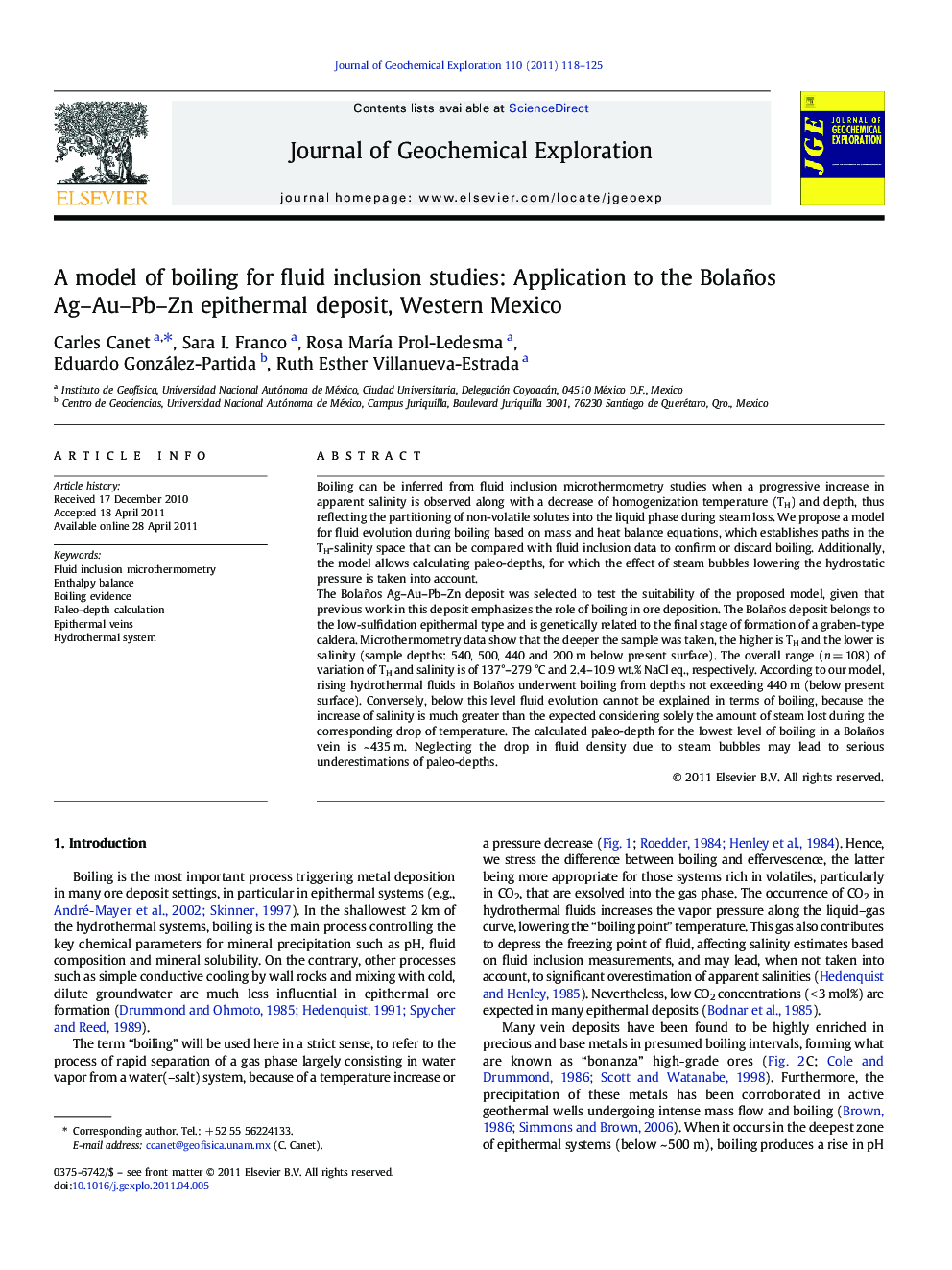| کد مقاله | کد نشریه | سال انتشار | مقاله انگلیسی | نسخه تمام متن |
|---|---|---|---|---|
| 4457888 | 1312640 | 2011 | 8 صفحه PDF | دانلود رایگان |

Boiling can be inferred from fluid inclusion microthermometry studies when a progressive increase in apparent salinity is observed along with a decrease of homogenization temperature (TH) and depth, thus reflecting the partitioning of non-volatile solutes into the liquid phase during steam loss. We propose a model for fluid evolution during boiling based on mass and heat balance equations, which establishes paths in the TH-salinity space that can be compared with fluid inclusion data to confirm or discard boiling. Additionally, the model allows calculating paleo-depths, for which the effect of steam bubbles lowering the hydrostatic pressure is taken into account.The Bolaños Ag–Au–Pb–Zn deposit was selected to test the suitability of the proposed model, given that previous work in this deposit emphasizes the role of boiling in ore deposition. The Bolaños deposit belongs to the low-sulfidation epithermal type and is genetically related to the final stage of formation of a graben-type caldera. Microthermometry data show that the deeper the sample was taken, the higher is TH and the lower is salinity (sample depths: 540, 500, 440 and 200 m below present surface). The overall range (n = 108) of variation of TH and salinity is of 137°–279 °C and 2.4–10.9 wt.% NaCl eq., respectively. According to our model, rising hydrothermal fluids in Bolaños underwent boiling from depths not exceeding 440 m (below present surface). Conversely, below this level fluid evolution cannot be explained in terms of boiling, because the increase of salinity is much greater than the expected considering solely the amount of steam lost during the corresponding drop of temperature. The calculated paleo-depth for the lowest level of boiling in a Bolaños vein is ~ 435 m. Neglecting the drop in fluid density due to steam bubbles may lead to serious underestimations of paleo-depths.
► A model of salinity–temperature evolution allows confirming boiling in vein deposits from fluid inclusion microthermometry data.
► To calculate paleo-depths, the effect of steam bubbles lowering the hydrostatic pressure must be taken into account.
► Neglecting the drop in fluid density due to steam bubbles may lead to serious underestimations of paleo-depth.
► Our model restricted boiling to the shallowest 440 m (below present surface) of a vein from the Bolaños Ag–Au–Pb–Zn epithermal deposit.
Journal: Journal of Geochemical Exploration - Volume 110, Issue 2, August 2011, Pages 118–125